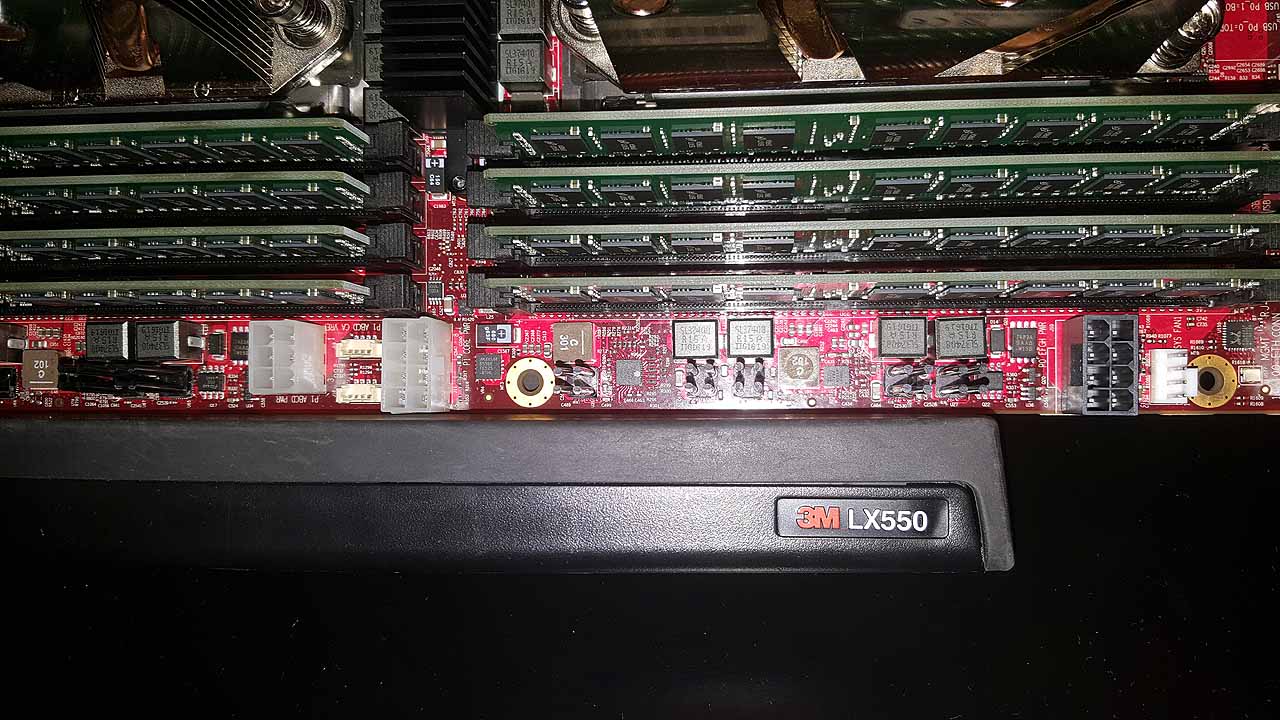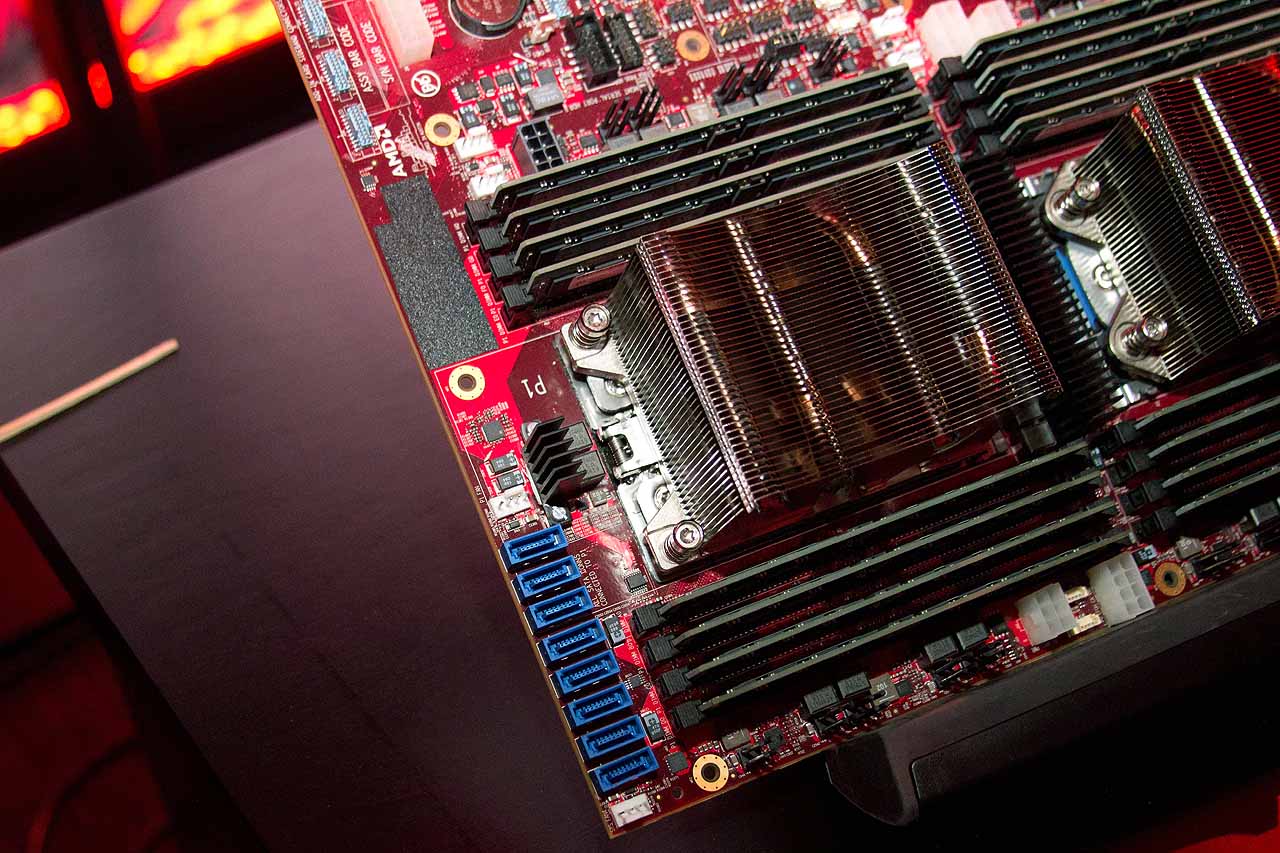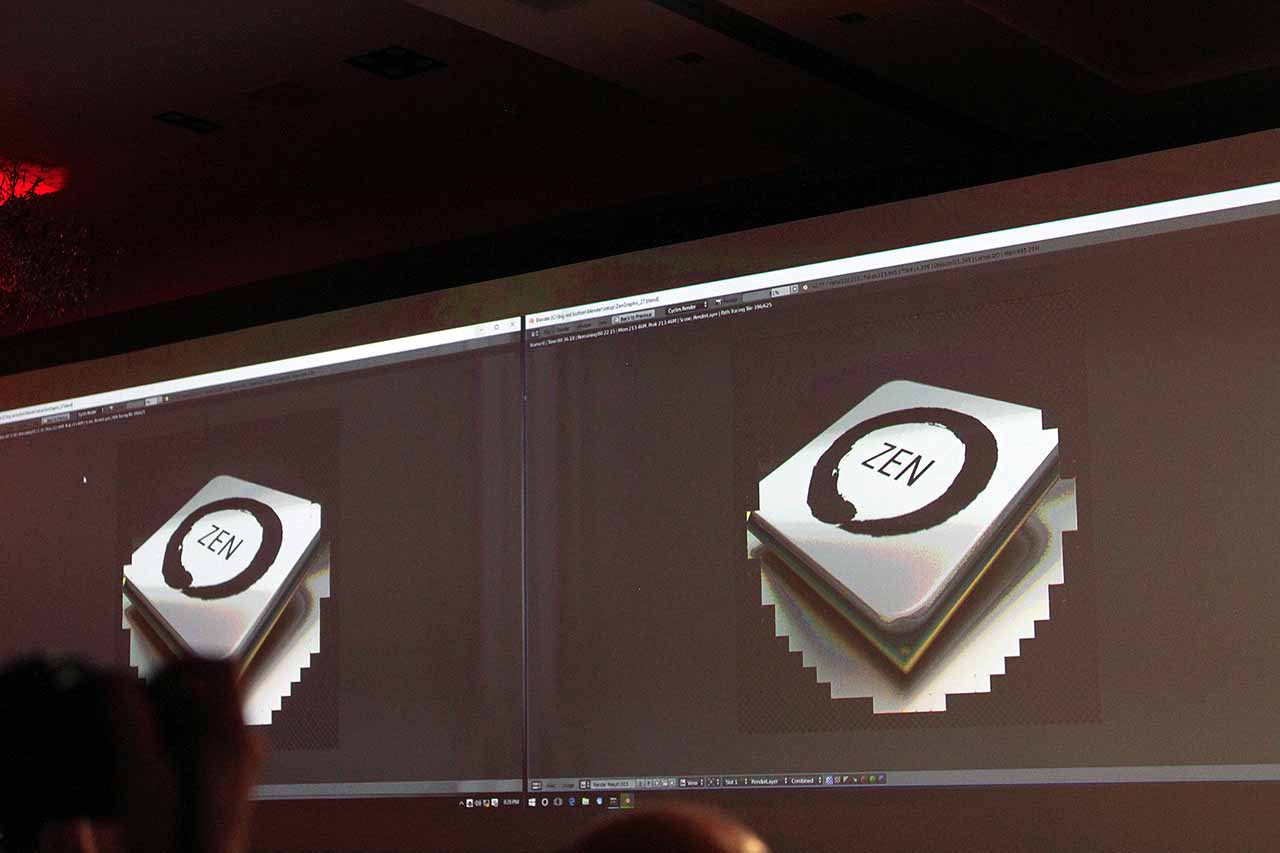AMD Unveils Zen Microarchitecture, Demos Summit Ridge Performance
AMD hosted an offsite invitation-only briefing during IDF to unveil the company's new Zen processor core microarchitecture, which will initially come to market in its Summit Ridge desktop CPUs. The company outlined some of the challenges associated with designing its new microarchitecture, which it claims is essentially a clean-sheet approach to processor design. AMD provided new architectural details and also demonstrated performance in a few benchmarks, including a head-to-head render test against an Intel Broadwell-E Core i7-6900K, albeit an underclocked one. AMD also had several Zen-powered demo stations available for the press to use after the event, and it also displayed its new 32 core/64 thread Naples server CPUs.
AMD CEO Dr. Lisa Lu took to the stage and explained that the company plans to employ the Zen core into key market segments, such as desktops, servers, notebooks and embedded platforms. She also touted many of the company's recent successes, such as the recent Polaris, 7th-Gen Bristol Ridge and Stony Ridge APU launches, along with the company's lucrative design wins in Microsoft and Sony consoles.
The Goals
But it was really time to turn the attention to the Zen microarchitecture. AMD's original goal was to increase Zen's IPC (Instructions Per Cycle) performance by 40 percent compared to the previous-generation Excavator core. According to the company, it achieved its goals.
AMD also noted that the company focused on providing power efficiency gains in tandem with the performance improvements, which is the key attribute that will allow the Zen cores to scale to address a broad swath of market segments. The Summit Ridge processors on display featured 8 cores and 16 threads. For now, AMD has the early silicon (including the CPUs used in the demos) clocked at 3 GHz, but the company will increase the clock and announce more detailed specifications as Zen moves closer to launch.
Zen uses the same 14nm GlobalFoundries FinFET process that it employs on its Polaris GPUs. The process provides a nice improvement over the 28nm process used with the Excavator and Steamroller microarchitectures. Zen CPUs will drop into the AM4 chipset that debuted with the Bristol and Stony Ridge products. The AM4 chipset supports DDR4, PCIe 3.0, Next-Gen I/O, USB 3.1 Gen 2, NVMe and SATA Express.
Diving In
AMD added SMT (Simultaneous Multi-Threading), a new cache hierarchy and increased branch prediction capabilities to the Zen core to attain its ambitious IPC goals.






The company added a micro-op cache, which helps with better instruction predictions, to increase ILP (Instruction Level Parallelism). AMD also added a wider execution width and improved instruction scheduling to boost ILP (and thus IPC). The company claims the optimizations provide 75 percent more scheduling capacity and a 50 percent increase in instruction width over its previous-generation processors.
Get Tom's Hardware's best news and in-depth reviews, straight to your inbox.
AMD also redesigned the cache subsystem to increase throughput. Zen includes an enhanced prefetcher, 8MB of shared L3 cache, a unified L2 cache and separate L1 instruction (64K 4-way) and data (32K 8-way) caches. AMD noted that the cache subsystem provides up to a 5X increase in cache capacity and bandwidth. Pairing the cache subsystem with SMT increases parallelism and boosts multi-threaded applications. As expected, Zen exposes the extra thread to the host as an additional core.
The company noted that the addition of the 14nm FinFET process, along with clock gating, a large Micro-op cache and the stack engine (among other improvements), provide a 40 percent IPC boost within the same energy-per-cycle envelope as its previous-generation Excavator core.
Taking On Broadwell-E
Surprisingly, AMD chose to demonstrate a head-to-head test of Summit Ridge against the Intel Broadwell-E Core i7-6900K, which also sports 8 cores and 16 threads.
The early Zen silicon is only clocked at 3 GHz, so AMD downclocked the 6900K (3.2 GHz base and 3.7 GHz turbo) to 3 GHz to normalize the test. We aren't privy to the final Summit Ridge clock speeds, but the company indicated that some SKUs would ship with higher clock speeds when it comes to market. We advise readers to take the test with a grain of salt. AMD did not share test bed details, such as the amount of system RAM, but indicated that the systems had comparable configurations.
The test consisted of a CPU-intensive multi-threaded Blender 3D rendering that scaled across all of the cores. The Summit Ridge CPU rendered the image ever so slightly faster than the Intel 6900K. The contest was close enough that, without a stopwatch, we couldn't give an accurate measurement of the speed difference, and AMD did not provide specific measurements for the test.
Demo Systems
AMD provided a number of Summit Ridge demo systems for the press to use after the official announcements, including a VR desktop system outfitted with an AMD Radeon RX 480, a gaming desktop setup and a workstation demo with a Radeon Pro Duo.


The systems functioned well, but the restricted nature of the demo systems didn't provide any meaningful insight into overall performance. The Summit Ridge systems were also inside of normal desktop cases, which obstructed our pictures and didn't allow for a closer internal examination.
Naples Server
AMD briefly introduced its server-centric 32-core/64-thread Zen-based Naples SoCs, but the company did not provide any details on the new platform.









A development motherboard outfitted with two processors was on display, which allowed for closer examination, and the demo included a functional server system running Windows Server. The server was not running a workload, but it served as proof that the Naples processors are up and running (at least to some extent).
Zen Is Alive And Kicking
The AMD live demos and systems indicate that the company is moving closer to shipping end products. The details of the architecture are interesting, but there are still more questions than answers. AMD indicated that it would share more architectural details during a session next week at the HotChips conference, so we expect to have more information soon. AMD did not disclose TDP details but stated that Zen would be competitive with Intel's CPUs.
AMD also mentioned in passing that it is already developing the follow-on Zen+ architecture but did not provide further details.
The challenge for AMD is to bring a competitive Summit Ridge to market, and Su stated that desktop products are already shipping to its partners, and the company expects wide availability in Q1 2017. The Naples platform will follow in 2Q 2017, and Zen-based APUs will make their debut in the second half of 2017. The company also expects to deliver both CPUs and APUs for the embedded market next year but did not provide a concrete timeframe.
The final Summit Ridge clock speeds, price and overclockability will be the key ingredients that determine its success or failure. AMD seems genuinely excited and optimistic that the Zen core will revitalize its entire CPU and APU portfolio, but until we have products to test, the future remains somewhat blurry.

Paul Alcorn is the Editor-in-Chief for Tom's Hardware US. He also writes news and reviews on CPUs, storage, and enterprise hardware.
-
Looking good so far.Reply
Unfortunately, I'm way too biased towards Intel to consider buying an AMD CPU any time in the near future, but I really hope Zen does well. Competition is good, and Intel definitely needs that competition. -
ComputerSecurityGuy So 6 core Broadwell is roughly on par with Zen. Not bad, AMD. That's decently competitive. What I really want to se is perf per watt figures though.Reply -
ComputerSecurityGuy Oops, I forgot that the i7-6900K was 8C/16T. This is better than I dared hope. I was expecting slightly slower than the i7-5960X. Instead I get slightly faster. And the i7-5960X was at the more optimistic end of my projections.Reply -
hannibal Of-course the test program was something that zen is good at, but at least it can exchange blows with intel in some applications and that is a good thing!Reply
Intel will most probably clock higher and be in general faster, but if Zen gets close in some cases and is not too far behind in another programs, not bad at all! It is really good to the competition! Hopefully Samsung 10nm node is good, so that AMD can move to that in the next update. Otherwise the Intel will get farther away, with its own 10nm production node, that most probably is better than what Samsung can do, but at least the difference would not be so huge as it has been several years. -
Ionlydothis lol pretty funny presentation. Was almost like I was watching an Nvidia one...Reply
If only Zen wasn't 2 years too late... Still, maybe someday they'll lead again... -
SylentVyper @XenolReply
I sort of agree with him though. They're saying a 40% increase over Excavator, which has been around for 5 years. Intel doing 10% a year for 5 years is 50%, so until actual reviews and benchmarks come out - at least from a numbers standpoint - they're no closer to Intel than they were 5 years ago. -
xxredcowxx Under-clocking the Intel chip to boost stats on "comparable" systems and Zen was not even noticeably faster? That's sad.Reply -
IceMyth What I would love is to know the price range for the Zen 8-Core & 4-Cores, also after release will have to wait few months until MB start releasing their wide range of them. On the other hand seems the speed for both of them wont exceed 3.2k after boosting!Reply




